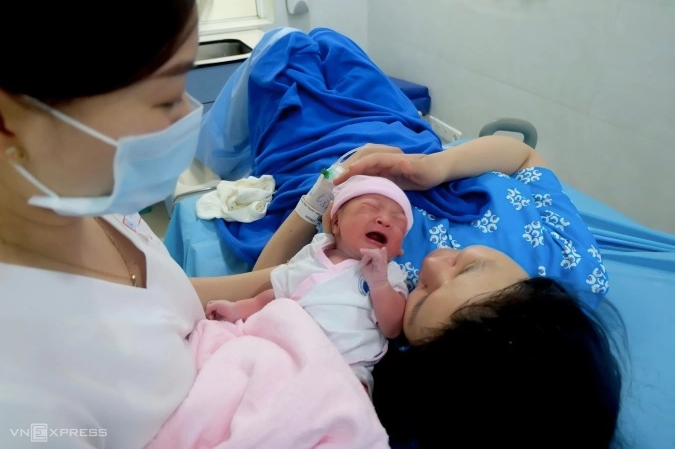
This birth promotion solution was included by the Ministry of Health in the draft Population Law, which is being consulted until June 12. Social housing is housing supported by the State, with the aim of providing low-cost housing for a number of priority groups.
In addition to the above plan, the Ministry of Health also proposed allowing couples and individuals to decide when to give birth, the number of children and the spacing between births. Allowing female workers to extend their maternity leave from 6 months to 7 months when giving birth to a second child.
At the same time, agencies and organizations are responsible for providing men and women before marriage with knowledge about reproductive health care directly related to married life; child care and raising. Reinforcing the value that each family should have two children, raising children well and providing advice and guidance on measures to prevent infertility. Propagating, mobilizing, communicating andeducating to change the behavior of couples, individuals, families and society in implementing population policies and measures to maintain replacement fertility.
These solutions were proposed by the Ministry of Health in the context of Vietnam's birth rate being among the lowest in Southeast Asia. Vietnam's birth rate is currently only 1.91 children per woman, among the five lowest birth rates in Southeast Asia. Compared to the regional average (2 children per woman), Vietnam is only higher than Brunei (1.8 children per woman), Malaysia (1.6 children per woman), Thailand and Singapore (1 child per woman).
The number of provinces with a fertility rate below replacement level has also increased rapidly, from 22 provinces in 2019 to 32 provinces in 2024, mainly concentrated in the Southeast and Mekong Delta. Ho Chi Minh City continues to be the locality with the lowest fertility rate in the country, reaching only 1.39 children/woman. In early May, Ho Chi Minh City began reviewing and making a list of women who have given birth to two children before the age of 35, with the date of their second child between December 21, 2024 and April 15, 2025, to support them with money and other policies.
The Ministry of Health predicts that with the birth rate continuing to decline, by 2039 Vietnam will end its golden population period, in 2042 the working-age population will peak, and after 2054 the population will begin to grow negatively.
"Prolonged low birth rate will directly and deeply impact the size and structure of the population and leave many consequences such as labor shortage, population decline, accelerated population aging, and increased migration flows," the Ministry of Health said.
Experts also assessed that Vietnam's birth rate has dropped to its lowest level in history, and is expected to continue to decline in the future. This trend stems from many causes, but mainly from economic pressure. Dr. Mai Xuan Phuong, former Deputy Director of the Department of Communication and Education (General Department of Population), now the Department of Population, analyzed concerns about housing and a series of living expenses such as milk, diapers, education, healthcare, etc. in the context of inflation, causing many people to delay and refuse to have children. For example, in Hanoi, housing and apartment prices have increased at an alarming rate, buying or renting is not easy, and housing costs are very expensive.
Declining birth rates are not only a problem in Vietnam but also in other countries around the world, such as China, South Korea, Japan, etc. Countries are changing a series of policies to encourage births, such as South Korea - the country with the lowest birth rate in the world - which has tripled its budget for birth promotion programs, while also providing large financial subsidies to families who have children. In Hungary, women who give birth to four or more children are exempt from personal income tax for life.
TH (according to VnExpress)Source: https://baohaiduong.vn/de-xuat-phu-nu-sinh-du-hai-con-duoc-ho-tro-nha-o-xa-hoi-412541.html






































































































Comment (0)